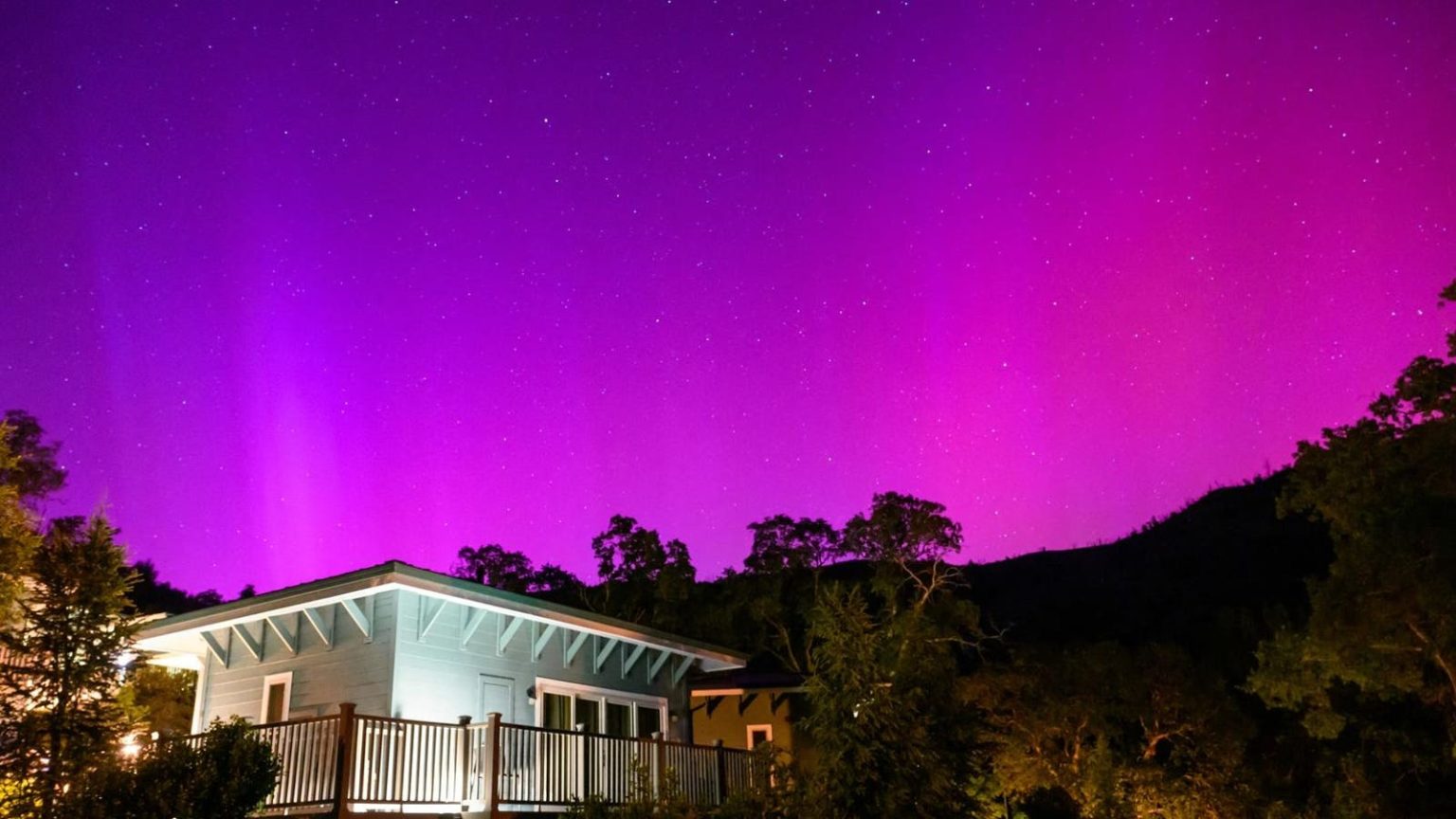Stargazers in the northern U.S. and Canada were treated to a rare sight on Friday night and early Saturday morning as the northern lights, also known as the Aurora Borealis, made a special appearance. This event was the result of a geomagnetic storm triggered by an eruption of plasma from the sun’s atmosphere. The National Oceanic and Atmospheric Administration described the event as “unusual and potentially historic,” bringing the lights as far south as the Carolinas and Florida along the East Coast.
While the northern lights technically occur throughout the year, they are not always visible and are usually best seen between September and April. Friday’s display of lights was considered an anomaly due to their visibility across a wide geographic area. According to NOAA’s Space Weather Prediction Center, there was a high likelihood of viewing the lights along the Canadian border, with a lower likelihood across the northern U.S. Additionally, it was predicted that the lights would remain visible on Saturday night, giving more people the opportunity to witness this natural wonder.
The intense solar storm that caused the northern lights to be visible in new regions this weekend also brought about concerns regarding other potential impacts. The National Oceanic and Atmospheric Administration warned of a “severe” geomagnetic storm that could lead to widespread communications disruptions and voltage problems. This warning, the first of its kind in nearly two decades, raised concerns about potential damage to satellites, the electric power grid, and radio systems. The storm was part of a series of coronal mass ejections from the sun, which occur when bursts of plasma blast from the sun.
In response to the rare showing of the northern lights and the potential risks associated with the geomagnetic storm, the National Oceanic and Atmospheric Administration provided updates and alerts to the public. They encouraged stargazers to take advantage of the opportunity to view the lights while also cautioning against the potential impacts of the solar storm. The event served as a reminder of the power of nature and the interconnectedness of Earth and space, highlighting the importance of monitoring and understanding space weather for both scientific and practical purposes.
Overall, the recent appearance of the northern lights in the northern U.S. and Canada due to a severe geomagnetic storm provided a unique and memorable experience for stargazers. The event was not only a spectacular display of nature but also raised awareness of the potential impacts of solar activity on Earth’s systems. As people continue to marvel at the beauty of the northern lights, it is important to remember the importance of space weather monitoring and preparedness to mitigate any potential risks associated with solar storms.


